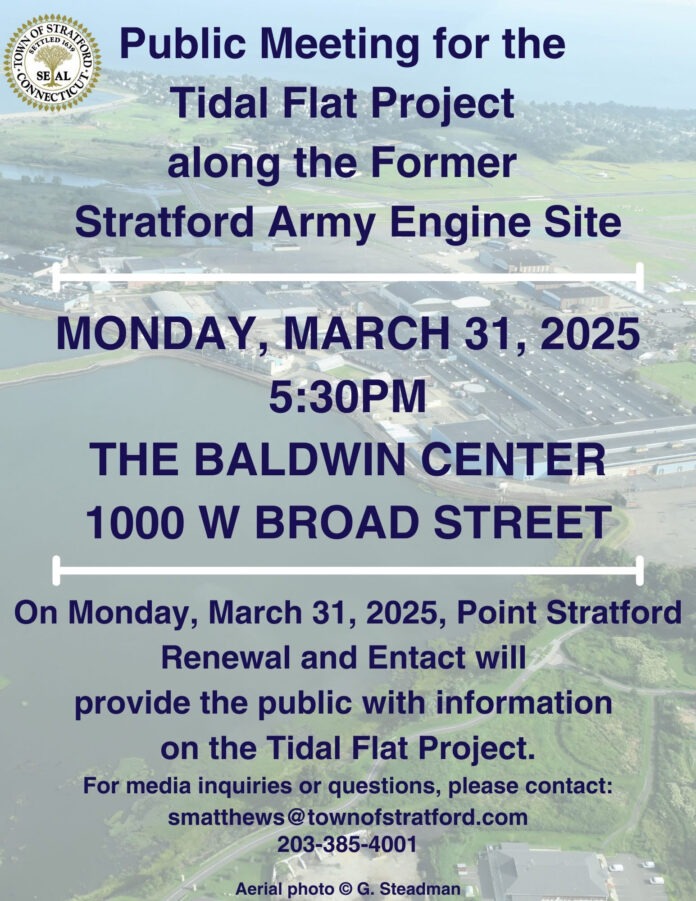Public Meeting on Tidal Flat Project at Stratford Army Engine Plant (AVCO)
Monday, March 31st at 5:30 p.m.
Baldwin Center
Sponsored by Point Stratford Renewal and Entact
The new owners of the historic plant, which was once used to manufacture World War II-era Corsair fighter-bombers but has sat idle for nearly three decades, intend to start tearing down the facility.
The work, which includes removing hazardous material and importing a million tons of fill to raise the property out of a flood zone, will allow the developers to transform the waterfront site into new businesses and amenities.
Barry Knott, an attorney representing the developers, told zoning commissioners earlier this month that the company has agreed to create a public park and viewing walkway where the property meets the river. He said the details of the park will be worked out after the demolition is complete.
“Both the town and my client are fully committed to this linear park concept on the water side of this property,” Knott said.
In addition to hosting a website, the commission required the developers to meet regularly with Mayor Laura Hoydick’s office to address any concerns about damage to Lordship Boulevard and Access Road from scores of heavy trucks that are expected to visit the property.
The company must also provide a report to town zoning officials each month during the duration of the work documenting any issues the developers faced and how the problems were resolved.
The developers are also prohibited from stockpiling fill material within several dozen feet of a street, must conduct daily air monitoring to avoid dust buildup and are required to take measures to prevent flooding during the demolition.
The army engine plant, built in 1929, was originally owned by the Sikorsky Aero Engineering Corporation and was later purchased by the military to build and repair planes, and to create the AGT1500 turbine engine for Abrams M1 tanks.
But the Pentagon eventually chose to shift production to other facilities around the country. The plant closed its doors in 1998, leaving behind large amounts of toxic waste such as spilled lubricants, hydraulic fluids and paint that are expected to be cleaned up as part of the demolition.



